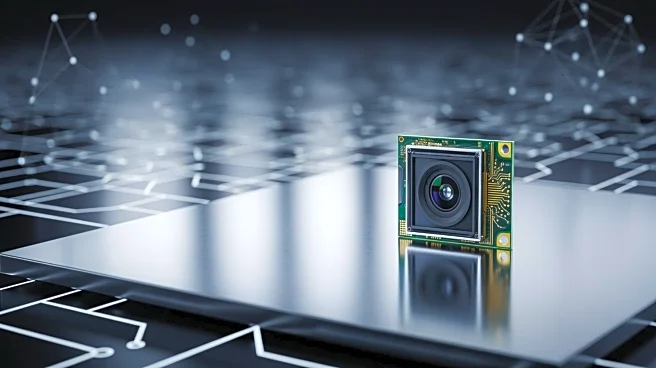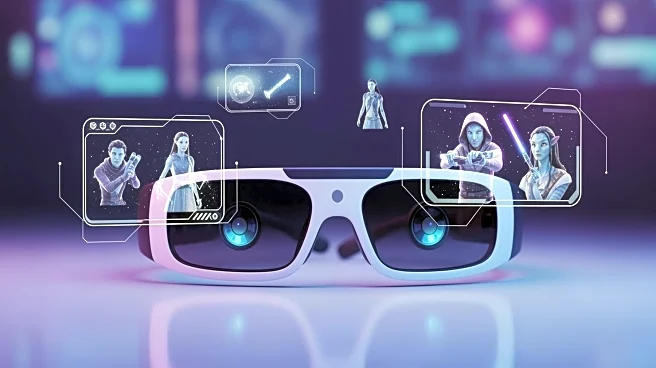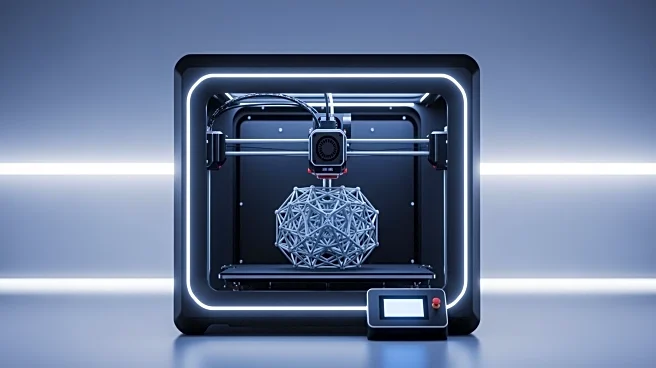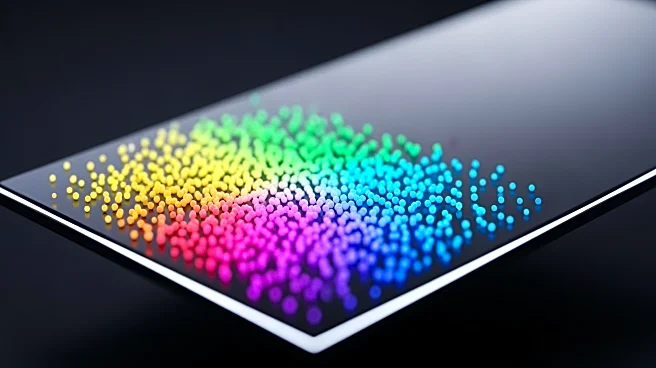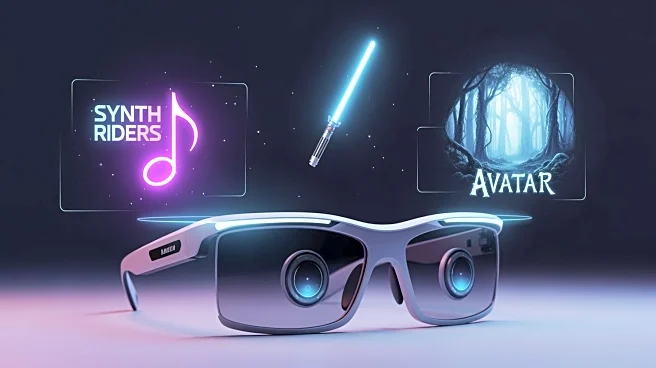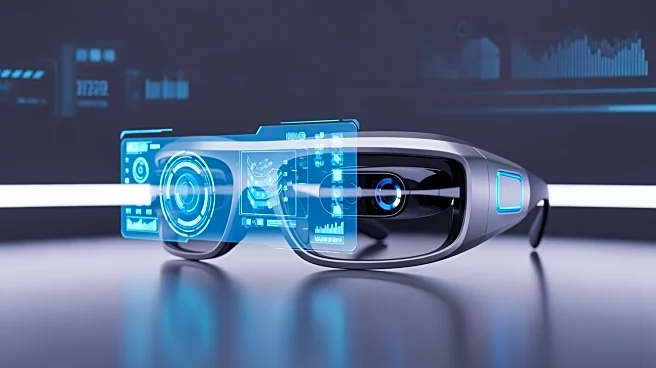What's Happening?
Recent developments in photolithographic fabrication have enabled the creation of high-resolution Micro-QLEDs, aimed at enhancing color-conversion microdisplays. The process involves using photolithography templates to achieve micron-scale pixel formation,
resulting in a full-color Micro-QLED device. This technology combines blue Micro-QLEDs with red-green quantum dot color converters (QDCC), achieving sub-pixel sizes as small as 8 μm x 8 μm. The fabrication process ensures high efficiency and resolution, making it suitable for applications in augmented reality (AR) and virtual reality (VR) displays.
Why It's Important?
The advancement in Micro-QLED technology represents a significant step forward in display manufacturing, offering potential improvements in resolution and efficiency for AR and VR applications. High-resolution displays are crucial for immersive experiences, and the ability to fabricate such devices with precision opens new possibilities for consumer electronics. The integration of quantum dot technology enhances color accuracy and brightness, addressing key challenges in display technology. This progress could lead to more widespread adoption of AR and VR technologies, impacting industries such as gaming, education, and remote work.
What's Next?
The focus will be on optimizing materials and device structures to further improve brightness and efficiency. Addressing photostability issues of quantum dot color converters is essential for long-term performance. As the technology matures, it is expected to be integrated into commercial AR and VR devices, driving innovation in these fields. Continued research and development will aim to enhance the compatibility of Micro-QLED fabrication processes with existing manufacturing techniques, ensuring scalability and cost-effectiveness.
Beyond the Headlines
The development of Micro-QLED technology raises questions about the environmental impact of manufacturing processes and the sustainability of materials used. Ethical considerations regarding the use of AR and VR in various applications, such as surveillance and data privacy, must be addressed. The cultural implications of widespread AR and VR adoption could influence social interactions and redefine entertainment and communication norms. Long-term, these technologies may alter how individuals perceive and interact with the digital world.


